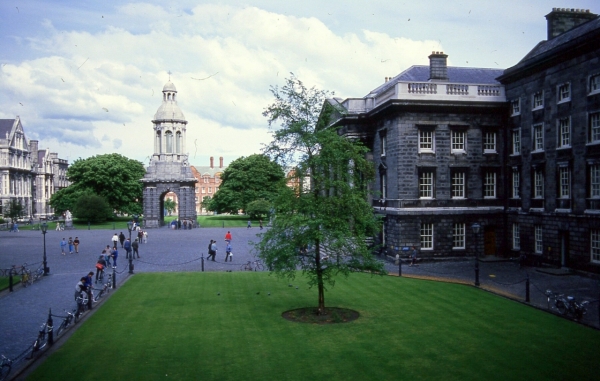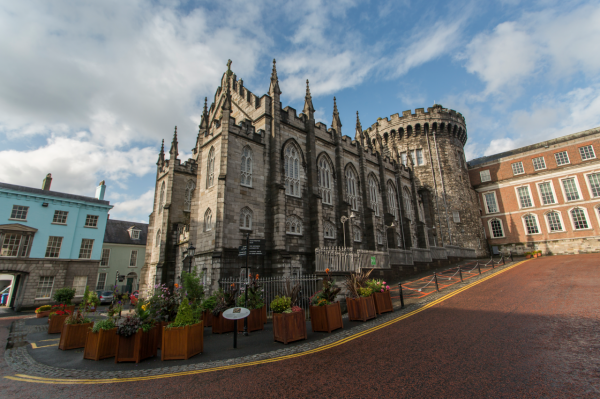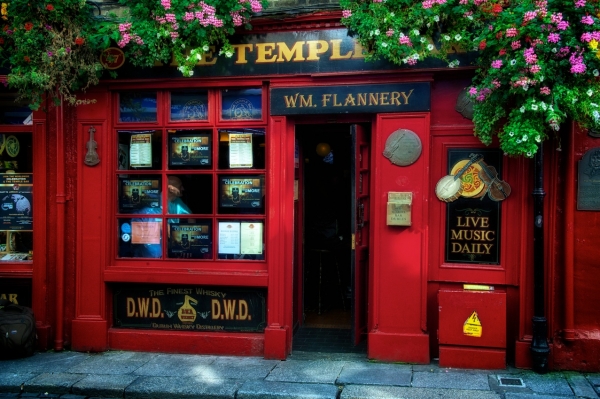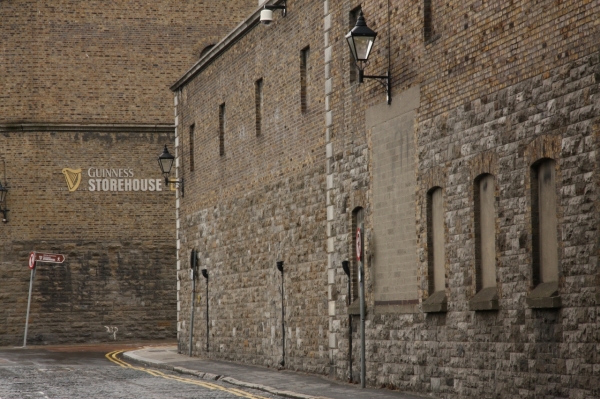Don't miss out on the best jobs!
Subscribe to HelpGoAbroad and weekly we will sent you an email with latest job posts. Provide your email address below
The River Liffey is at the heart of Dublin, capital of the Republic of Ireland. The paths that hug its banks offer places to wander, cycle and contemplate. Set just back from its waters, to the west of the city centre, is the main brewery for Ireland’s most famous tipple: Guinness. It is estimated that ten million glasses of the dark draft, with a creamy white top, are sold around the world every day.
But Dublin has a lot more to offer than just beer. There’s delicious seafood, lots of live music, historic buildings - including Dublin Castle - and excellent theatres. The city has long been a magnet for artists, actors and literary figures such as James Joyce and Oscar Wilde. A number of well-known musicians also started out in its vibrant bar and club scene including U2’s Bono and Bob Geldof, the man behind Live Aid. The city’s thriving student community, including many who come to Dublin to study abroad, ensures that this tradition continues today.
Housing
As with many popular cities in Europe, rents in Dublin aren’t cheap. But with many landlords catering to the extensive student population, it is possible to find reasonably priced accommodation. Airbnb offers some shared rooms for as little as €15 a night, right in the city centre. Expect to pay around €40 for a single room with shared bathroom or €70 for a studio apartment. Prices drop a little if you are prepared to live some way out of town. A good tip is to try to find somewhere close to rail or tram links as Dublin’s notoriously bad traffic can make bus journeys very long indeed.
Hotels range from ‘Bed and Breakfast’ places like the centrally located Avondale Guesthouse, 41-42 Lower Gardiner Street for €20 a night for a double room to the mid range Jurys Inn Dublin Parnell Street with rooms for €60.
Trinity College offers accommodation for around €50 a night for a single room during student vacations at its Nassau Street site. They also have cheaper shared accommodation, particularly useful for those travelling together seeking to work abroad or to intern abroad.
The central Dublin International Youth Hostel, 61 Mountjoy Street, has twin rooms with a shared bathroom for €25 a night.
Transportation
Given how gridlocked Dublin can get, especially at rush hour, it’s frustrating that the most extensive form of public transport is provided by the ‘Dublin Bus’ company. As fares must be paid with coins (drivers can’t take banknotes or give change), it’s well worth getting a pre-paid card such as the ‘Leap Card’. This will also be valid on the city’s trains and trams. You can either pre-load the card and use it on a ‘pay as you go’ basis or buy a ‘Leap Visitor Card’ which offers 72 hours of unlimited travel on most public transport, including the return trip between the airport and the city centre on the ‘Airlink Bus’ for €19.50. This is pretty good value given that the ‘Airlink’ trip normally costs €6 each way. You can buy a ‘Leap Card’ in the ‘Spar’ shop in the arrivals hall in Terminal 1 or Terminal 2 in Dublin Airport.
Although the rail service doesn’t extend throughout the city, it provides one of the best ways to see some spectacular views of Dublin Bay - take a trip on the DART (Dublin Area Rapid Transit) from the city centre as far as Bray. On the other side of the city, to the north, the DART terminates at Howth, a quiet fishing village with some nice cliff walks.
The 'Luas' tram system (‘Luas’ meaning speed in Irish Gaelic) extends to 40 stations over 40km of the city. There are 3 lines and trams generally operate every 5-7 minutes.
Entertainment
Dublin, like many other places in Ireland, is renowned for “the craic”, slang for having a good time usually (although not always) accompanied by lots of alcohol and/or music. In reality this is a bit of a cliché. There are still certainly plenty of pubs and bars in which to indulge, especially on the public holiday of St Patrick’s Day (17th March), but today’s Dublin is a sophisticated city with cuisine and culture to match that of any of its European neighbours.
The cultural attractions include an art-house cinema at the Irish Film Institute which hosts an annual ‘Reel Ireland’ season of work by the country's up-and-coming filmmakers and the Gallery of Photography (free admission).
Dublin Castle doesn’t have a moat or drawbridge; it’s actually a venue for state functions and occasional performances like concert recitals. The beautiful interior is accessible on a payment but you can wander around the castle grounds for free.
The Dublin Fringe festival, held annually usually in September, is dedicated to showcasing experimental material and innovative performances.
The Guinness Storehouse, St James Gate, is the brand’s main HQ. Although there’s no access to the brewery itself, there is an opportunity to learn about production and visit the Storehouse’s circular ‘Panorama’ bar, where you can sip a pint of the famous stout whilst taking in views of the city. Tickets start at €14.50 for students (drinks not included).
Eating and Drinking
If you’re shopping in supermarkets, expect to pay the same prices as in the British capital London: just over €1 for a litre of milk and just under €2 for a loaf of bread. A pint of Guinness in a pub will cost around €5-7 and a cappuccino €2-4.
Dublin’s Temple Bar district (and whilst there a visit to the ‘Temple Bar’ pub is highly recommended) is generally agreed to be the city’s ‘place to eat’. There are fine dining restaurants, as well as some that are more affordable like Café Gertrude and Skinflint both of which offer simple but filling menus with a main lunch course for around €7.
If you’re after traditional Irish fare, try The Winding Stair Restaurant at 40 Lower Ormond Quay. It offers dishes like Irish pork terrine and gravlax with beetroot for just over €20 for lunch, with a glass of wine included.
It’s well worth checking out other restaurants’ lunch ‘specials’. Many offer a surprisingly good value ‘fixed price’ deal, eg Brasserie Sixty6, South Great Georges Street, which has a weekday lunch special priced at €10 for any main course and a drink.
Local and artisan markets are another good way to sample local produce with ‘tasters’ available on some of the stalls. Temple Bar Food Market and Howth Market are open every Saturday and Sunday 10am - 5pm and every Sunday the beautiful seaside town of Dun Laoghaire comes alive with a market of over 50 vendors selling everything from hot food to Irish seasonal produce.
Unsurprisingly Dublin is extremely well served by pubs. O'Donoghue's, 15 Merrion Row, holds live traditional Irish music sessions in the front bar. It’s where the ‘Dubliners’ band got its early gigs. The Cobblestone, 77 King Street North, is a legendary traditional and folk venue. Although you have to pay to go upstairs, you can hear some great music for free in the musicians’ corner of the pub downstairs
If you want a change from stout J.W. Sweetman Craft Brewery, 1-2 Burgh Quay boasts the only pub in Dublin with a micro-brewery inside the premises.
Want to study abroad in Dublin?
Dublin is home to four of Ireland’s eight universities, including the highly respected Trinity College Dublin (TCD) and University College Dublin (UCD), both of which regularly do well in world university ranking leagues.
Dublin tends to score strongly in the “student mix” category, reflecting its high ratio of international students. The Irish capital also ranks well on the “desirability” set of indicators, which includes factors such as safety, pollution and social tolerance.
Its weakest point is affordability, with international tuition fees averaging around €16,000 per year.
The bottom line
So what does it cost to live for one month in Dublin? Even living in shared accommodation in a youth hostel, it would be hard to do for less than €1,000 Euros a month but around €1,500-2,000 Euros is a realistic budget for someone who wants their own space and to enjoy a pint – or two - of something ‘reviving’ every now and again.
Sign in to publish a comment




Be the first to comment on this post.